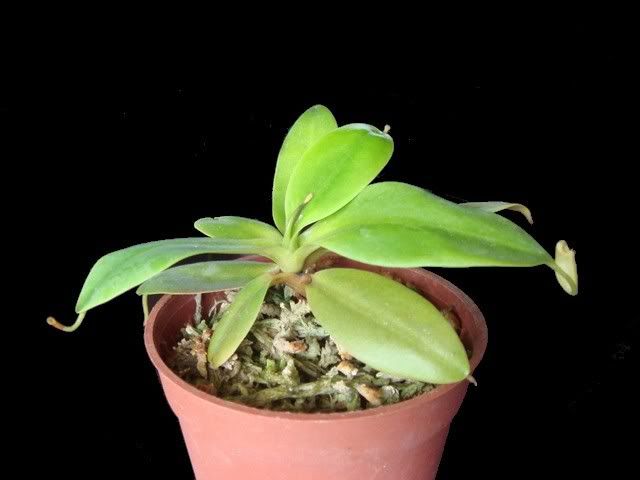
 |
|
|||||||
| Nepenthes Everything about Tropical Pitcher Plants |
 |
|
|
Thread Tools | Search this Thread | Display Modes |
|
#11
|
|||
|
|||
|
I imagine one big contribution with burned earth (if it is clay based) is that it will give the plants some Iron. A native plant enthusiast that I got to know and chatted with, told me that he has seen local nepenthes on Red Clay, the leaves and pitchers he said had really great coloration.
TTFN Arvin
__________________
Arvin's Growlist |
|
#12
|
||||
|
||||
|
Quote:
Therefore, it would be tempting to postulate that burnt soil works best because it is inert and undergoes minimal change (physically and chemically). Anecdoctal evidence suggests that it works. Personally, my sibuyanensis, sanguinea, hirsuta performs much more consistently in burnt soil. The only drawback is frequent watering. The baking leaves a certain amount of hydroxides (from oxides) of group I and II elements. They are water soluble to slightly soluble. For me, I always wash and soak the soil to allow these salts (as well as any mobile phosphates & sulphates) to be leached out. Else there will be salt built-up. It is noticeable either on the surface (capillary draw followed by evaporation), or at the bottom of the pot (from leaching through watering and then evaporation). I also sieve burnt soil to get a minimal size. Prevents clogging and makes the soil open. Messy, but if you have an area to work with, gives you inert, almost salt free (you can test the conductivity) media. |
|
#13
|
|||
|
|||
|
Great explanation Poweramps! Thanks for the input.
|
|
#14
|
||||
|
||||
|
Thanks, Poweramp for your input. That reminds me to flush my pots more often because I do get quite a bit of mineral build-up.
The following N. campanulata is doing well and pitchering at my balcony in LFS. Currently, the crazy weather is welcomed by this species...very bright one moment then followed by the rain. Not trying to contradict my own thread about the use of burnt earth but just want to highlight that N. campanulata is able to do well in LFS and perlite too when weather conditions are favourable. 
Last edited by Cindy; 19th August 2008 at 05:44 PM. |
|
#15
|
||||
|
||||
|
Most welcomed. Lovely specimen, Cindy.
|
|
#16
|
|||
|
|||
|
Thanks for the explanation Poweramps!
Okay, I take it that the same or at least similar explanation is the reason why people don't use Clay pots for potting CPs? Because it really does have Mineral buildup? Wonder if I soak the clay pots in slightly acidic water (say acetic acid) might that dissolve the minerals and allow them to be flushed before using? Just so we are still on topic, might this thing work with burned earth too? TTFN Arvin
__________________
Arvin's Growlist |
|
#17
|
||||
|
||||
|
I use clay pots and it seems ok. Pots are clay that had been fired to 'fuse' the particles. There are still salts, but washing and soaking should do it. They can behave like ion exchangers, so my bet would be a few rounds of washing. Small quantities of salt can slowly exchange with the soil but that might be useful to the plant. Acetic acid is a weaker acid than the acid that formed the conjugate base phosphate and sulphate salt. So it might be difficult to displace say MgSO4 to Mg(CH3COO)2, though I have never tried it. I just wash and soak and wash and soak until i feel that the pot is ok. Not very scientific

|
|
#18
|
|||
|
|||
|
Already started soaking clay pots now, will try on some droseras first, I am almost sure that nepenthes (most) will take clay pots that are not soaked. VFTs, I'll use plastic for now, though I am more interested in using clay pots for VFTs because of the cooling effect of clay pots to the medium, specially during full sun.
TTFN Arvin
__________________
Arvin's Growlist |
|
#19
|
||||
|
||||
|
I think someone did a good study and publish a paper on the evaporative cooling of porous clay pots vs glazed pots. What was interesting is the fact that porous pots have higher thermal conductivity when wet. When evaporative cooling cannot work, the thermal conductivity results in the pot content being hotter than a non-porous pot (think of wet towel to hold a hot pot vs a dry towel).
|
|
#20
|
|||
|
|||
|
Thanks to Cindy, since reading about Cindy's success with red earth, I have replaced my only remaining campanulata with red earth and it has enjoyed a growth spurt since. First pitcher is coming up soon.
I have bad experience of growing campanulata in sphagnum because another plant grown in pure sphagnum died while this plant grown in a mixture of sphagnum + perlite survived but I found it likes the red earth much more. |
 |
| Currently Active Users Viewing This Thread: 1 (0 members and 1 guests) | |
| Thread Tools | Search this Thread |
| Display Modes | |
|
|